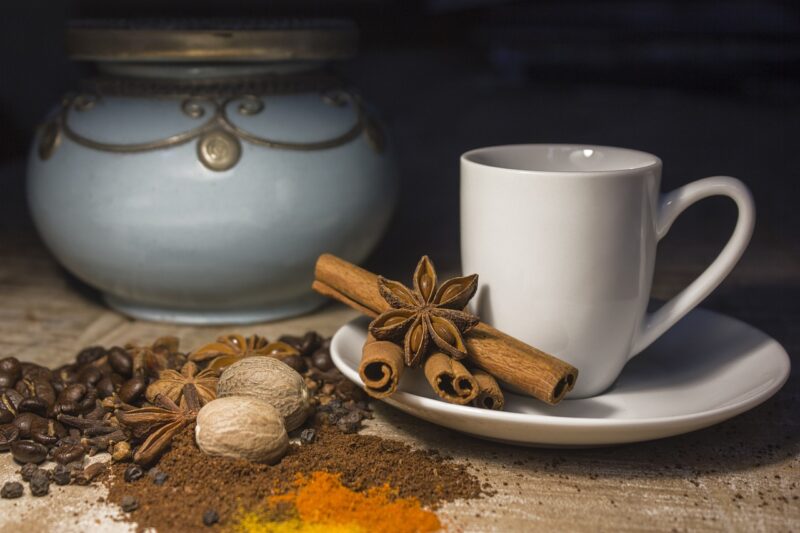
Spices have played an integral role in human history, often leading to exploration, conquest, and the establishment of trade routes that shaped the modern world. Among these valuable commodities, cinnamon and nutmeg stand out as two of the most sought-after spices that significantly influenced global trade dynamics. In this article, we will delve into the fascinating stories of these aromatic spices, their impact on world trade, and how they led to the establishment of vast economic networks.
1. The Allure of Spices: A Historical Perspective
For centuries, spices have held a prestigious place in societies across the globe. Beyond their culinary uses, they were revered for their preservative and medicinal properties. The allure of spices like cinnamon and nutmeg was so powerful that it drove explorers to venture into uncharted territories in search of greater profits.
Cinnamon, native to Sri Lanka, was among the first spices to be traded internationally. Its fragrance and flavor made it a staple in both culinary practices and traditional medicine. Nutmeg, on the other hand, originated from the Banda Islands in Indonesia, where it was considered a sacred spice, used in religious rituals and as a status symbol.
The high demand for these spices in Europe during the Middle Ages sparked the race to discover direct trade routes in the 15th and 16th centuries. European nations vied for control over these lucrative commodities, resulting in historical events that shaped world trade as we know it.
2. The Spice Trade and Its Key Players
The spice trade is often divided into three main phases: the ancient trade routes, the age of exploration, and colonial domination.
**Ancient Trade Routes:**
– The journey of cinnamon and nutmeg began in Asia, where they were cultivated and harvested. Ancient traders would transport these spices overland to the Mediterranean, where they were then shipped to Europe.
– Middle Eastern traders, particularly in cities like Baghdad and Damascus, played a crucial role in facilitating this trade, marking the beginning of a complex network that spanned continents.
**The Age of Exploration:**
– With the discovery of the New World and the subsequent exploration of the Spice Islands, European countries sought direct access to these valuable spices. Figures like Christopher Columbus and Vasco da Gama were pivotal in exploring new routes.
– The Portuguese were among the first to establish a direct sea route to India, leading to the establishment of colonial trading posts. However, they were soon joined by the Dutch and the English, who also sought to dominate the spice trade.
**Colonial Dominance:**
– The Dutch East India Company (VOC) came to control much of the nutmeg trade by the 17th century, ruthlessly asserting their dominance over the Banda Islands. They implemented monopolistic practices that greatly affected local economies.
– Likewise, the British established plantations in the Caribbean for the cultivation of nutmeg, changing the dynamics of the global spice market.
This period not only marked the exploitation of resources but also the movement of people, ideas, and cultures between continents—a lasting effect of the spice trade.
3. The Economic Impact of Cinnamon and Nutmeg
The economic ramifications of the spice trade were far-reaching, affecting not only the exporting countries but also the importing nations. Here are some key points regarding the economic impact of cinnamon and nutmeg:
– **Establishment of Global Trade Networks:** The immense profits generated from the spice trade prompted the creation of new trade routes, leading to the establishment of complex global trade networks that allowed commodities to flow between Europe, Asia, and the Americas.
– **Introduction of Mercantilism:** The quest for spices contributed to the emergence of mercantilism, an economic philosophy focusing on sustaining and enhancing national wealth through trade. European nations established colonies to source raw materials and create markets for their finished goods, dramatically reshaping world economies.
– **Cultural Exchange:** The spice trade facilitated cultural exchange, influencing food practices worldwide. The incorporation of spices into various cuisines transformed culinary traditions, uniting cultures through shared tastes and flavors.
With high demand came high prices. The cost of spices was not merely a reflection of their rarity but of the power struggles, exploration, and exploitation involved in bringing them to market.
4. The Legacy of Spices in Modern Trade
Today, the story of cinnamon and nutmeg continues to influence global trade and commerce:
– **Sustainable Sourcing:** There is a growing recognition of the importance of ethical sourcing and sustainability. Brands are now more focused on ensuring fair trade practices and fostering relationships with farmers who cultivate these spices.
– **Culinary Tourism:** The growing interest in unique flavors has led to the rise of culinary tourism, where travelers seek to explore regions known for their spice production, further boosting local economies.
– **Health Awareness:** As the health benefits of spices become more widely recognized, there is an increase in demand for organic and natural products, driving market trends.
The legacy of the spice trade continues to resonate today, demonstrating how a simple commodity can catalyze economic, social, and cultural transformations across the world.
Conclusion: Spices as Catalysts of Change
The history of spices like cinnamon and nutmeg is not only a tale of culinary excellence but also a narrative intertwined with exploration, conquest, and economic evolution. From the ancient trade routes established over thousands of years to the modern-day emphasis on sustainable practices, spices remain powerful agents of change in shaping global trade.
Understanding this history allows us to appreciate the intricate web of interactions that spices have fostered throughout time. Whether enjoyed in a warm bowl of cinnamon oatmeal or a fragrant nutmeg-infused curry, these spices are reminders of our collective history, connecting us to the past while shaping our present and future.
As we navigate the complexities of global trade today, let us remember the humble spice and its role in shaping the world we know.








